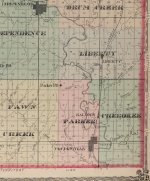Gooner
Full Member
Anyone know any treasure stories in Nowata County? We would really like to read them.
Kansas City Star, April 28, 1931:
"OKLAHOMA CITY, April 28. - Treasure seekers who believe fabulous amounts of gold and silver were buried in Oklahoma and Kansas by the Dalton gang may lay their picks and shovels aside.
Emmett Dalton, 60, last survivor of the band, who now is a prosperous real estate dealer in California, gave information to dispel the fortune hunters’ illusions last night.
'We never buried any treasure,' he said. 'We needed all the money we collected for our own uses, or to lend to our supposed friends.'"
